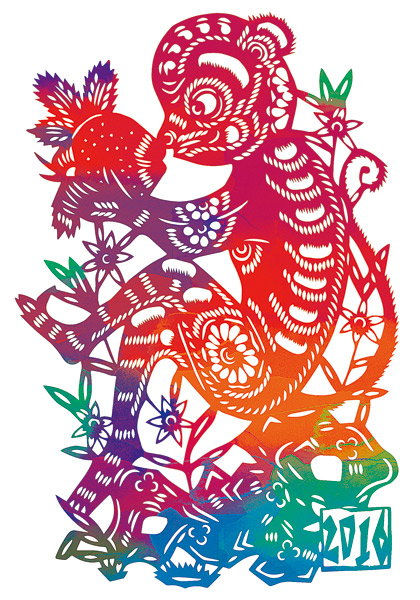Conflicting traits are mark of monkey
By Raymond Zhou (China Daily) Updated: 2016-02-12 00:43Amid contradictory views on the lunar year's zodiac animal, one monkey stands so tall — it can change its size at will — that it threatens to dwarf not only its brethren but humans as well, writes Raymond Zhou.

Of all 12 zodiac animals, the monkey, while not enjoying the exalted status of the dragon or the tiger, is widely acknowledged to be closest to us humans. Comparing somebody to a monkey, though still largely derogatory, becomes more acceptable because it can take on a scientific dimension once Darwin's theory is factored in.
Most Chinese first encounter the human's relative in the zoo. In recent years some wildlife parks have offered a closer view of the animal's natural habitat. There have been reports of monkeys that pickpocketed tourists or committed other misdemeanors.
The practice of keeping a monkey as a pet is still rare, and the ancient Chinese tale of the monkey's loyalty, strikingly similar to the most moving accounts of dogs, is lost to all except a few historians.
Fortunately, 2016's zodiac animal has a strong presence in the country's language, arts and literature. Arguably China's most colorful literary creation is a personified monkey.
The Monkey King, from the epic Ming Dynasty (1368-1644) novel Journey to the West by Wu Cheng'en (1501-1582), has gained more worldwide renown than any other Chinese character of the literary canon. But monkeys do not have to possess superheroic qualities such as flying or changing the size of the weapon at whim. They include many idiosyncrasies that may not be in agreement.
The monkey is endowed with many conflicting traits. On the one hand it stands for impatience, as in the Chinese phrase that translates as monkey anxious. On the other hand, its word origin in Chinese points to a cleverness that induces a refusal to jump into precarious situations. In ancient times when hunters used food as bait, monkeys would climb to the top of trees and survey the environment for possible danger. They would bide their time until the danger — the presence of the hunters in this case — is gone before they targeted the food.











